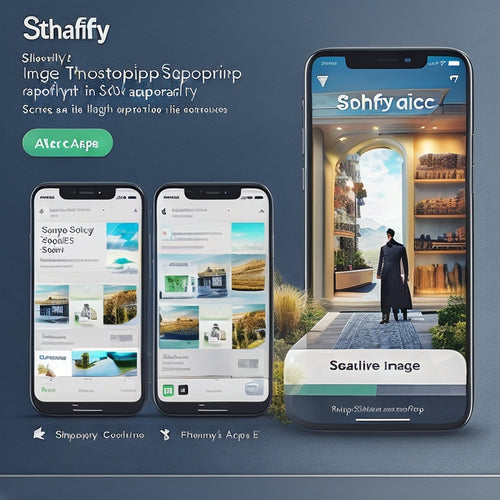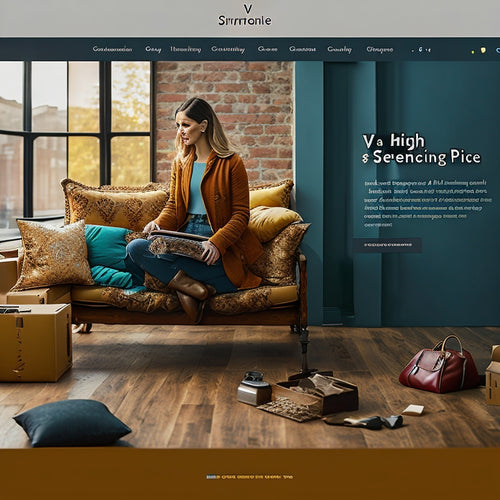
Mastering the Import of Downloadable Products
Share
Mastering the import of downloadable products requires a thorough understanding of the import flow, proper use of CSV file formats, and careful configuration of remote storage modules to guarantee seamless integration and efficient management of downloadable links and samples. To achieve this, one must organize downloadable links and samples effectively, specify default root directories, and utilize remote storage modules for storage and management. By grasping these essentials, you'll be well on your way to streamlining your downloadable product import process, and a deeper exploration of these concepts will reveal even more opportunities for optimization and growth.
Key Takeaways
• Use a CSV file format with separate columns for downloadable links and samples to ensure efficient importation.
• Specify image file locations for downloadable link and sample images to maintain organized storage.
• Set up a remote storage module to centralize storage and management of downloadable content.
• Define default root directories for downloadable links and samples to ensure seamless integration.
• Organize downloadable links and samples effectively using a well-structured folder system to facilitate easy updates and maintenance.
Importing Downloadable Products Essentials
When importing downloadable products, it is important to understand that the flow for importing these products is similar to that of Bundle or Configurable Products, with the key difference being the addition of downloadable links and samples with images.
To successfully import downloadable products, a CSV file format is required, with separate columns for downloadable links and samples. Image file locations are essential, and it is necessary to specify the folders where downloadable link and sample images are stored.
Default root directories for downloadable links and samples must be defined, and image file locations should be structured accordingly.
Configuring Remote Storage Module
The remote storage module plays a crucial role in downloadable product imports, as it allows administrators to store and manage downloadable links and samples in a centralized location. This module enables efficient file location management, ensuring that all downloadable content is organized and easily accessible.
To configure the remote storage module, follow these essential steps:
-
Set up remote storage: Enable the remote storage module and specify the default root directory for downloadable links and samples.
-
Define file locations: Determine the folder structure for downloadable link and sample images, making sure they are stored in the correct locations.
-
Verify configuration: Double-check the remote storage setup to guarantee seamless integration with downloadable product imports.
Managing Downloadable Links and Samples
Effective downloadable product management relies on proper organization and storage of downloadable links and samples. This can be achieved by understanding the default root directory and folder structure.
The default root directory specifies the location of downloadable links and samples, which can be impacted by the remote storage module. Image handling is vital, and understanding the folder structure is essential for managing downloadable links and samples.
For example, downloadable link images are typically stored in a specified folder, while downloadable sample images are stored in a separate folder. A well-organized folder structure guarantees efficient management of downloadable products, making it easier to update and maintain products.
Frequently Asked Questions
Can Downloadable Products Be Imported Without Specifying a Default Root Directory?
"No, downloadable products cannot be imported without specifying a default root directory, as it defines the File Structure for storing downloadable links and samples, offering Directory Options for customization and organization."
How Do I Handle Downloadable Links With Special Characters in the CSV File?
When importing downloadable links with special characters, make sure to use proper character encoding and URL escaping in the CSV file to prevent errors, using standards like UTF-8 and percent-encoding to maintain link integrity.
Are Downloadable Sample Images Required for All Downloadable Products?
In the world of e-commerce, downloadable sample images are not obligatory for all products, but rather a means to enhance Product Customization, allowing customers to preview content; Image Requirements are flexible, accommodating diverse product needs.
Can I Use the Same Folder for Downloadable Links and Sample Images?
When organizing downloadable products, it's important to use the same folder for downloadable links and sample images, but clear folder organization and file naming conventions are essential to avoid confusion and guarantee seamless imports.
Do I Need to Update the CSV File if the Remote Storage Module Is Enabled?
"When the remote storage module is enabled, it's a 'game-changer' for downloadable products import. Yes, update the CSV file to reflect Remote Sync and Cloud Integration, ensuring seamless data transfer and avoiding import errors."
Related Posts
-
Creating Shoppable Videos: Boost Your Ecommerce Sales
Shoppable videos have emerged as a powerful tool for businesses looking to enhance their ecommerce sales. By combini...
-

Essential SEO Apps for Shopify: Boost Your Store's Visibility
This article explores the significance of SEO apps for Shopify stores in enhancing visibility and ranking in search ...
-

Efficiently Automate Your Shopify Store for Success
The automation of Shopify stores has become increasingly popular due to its potential benefits and the availability ...

